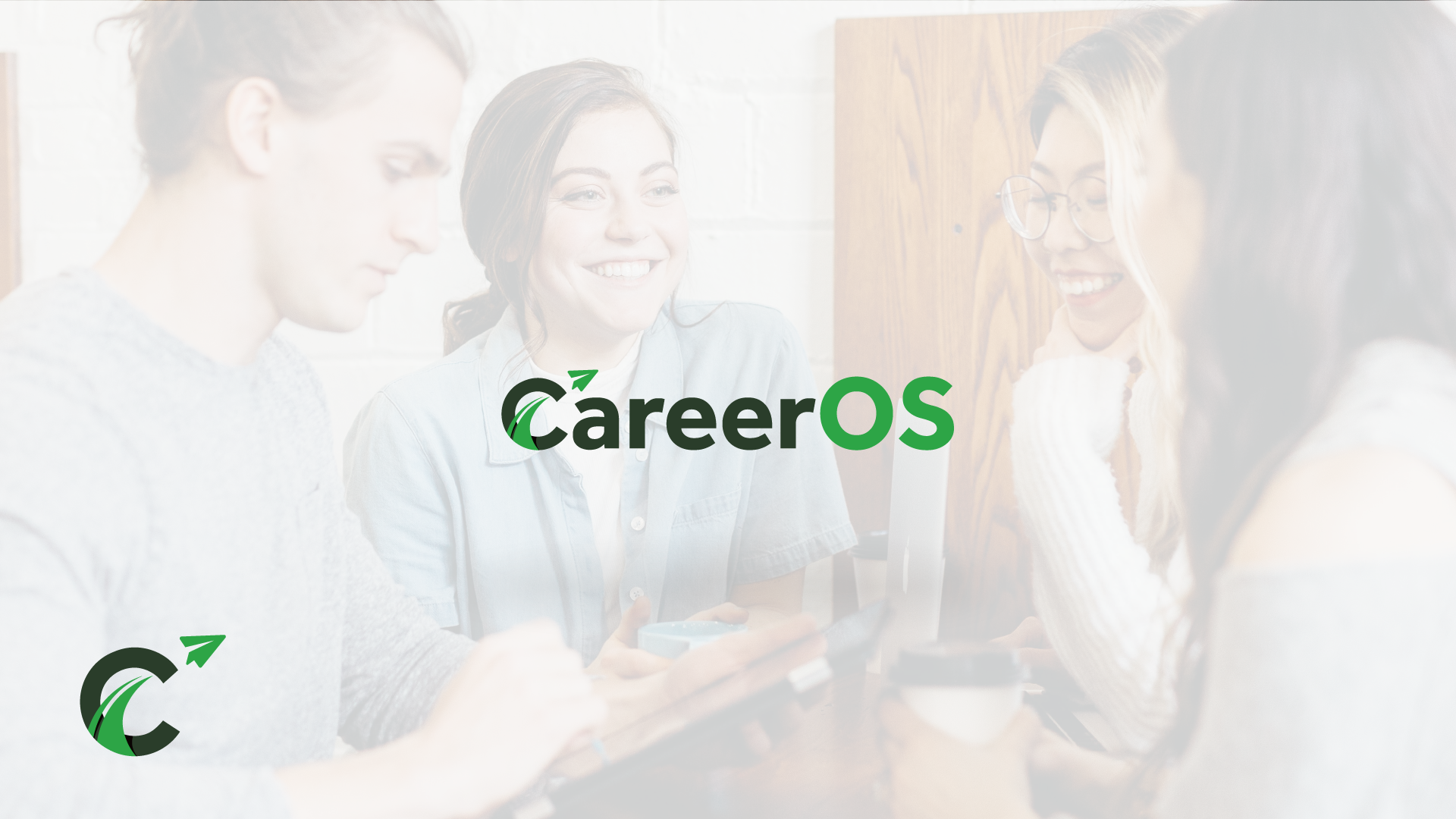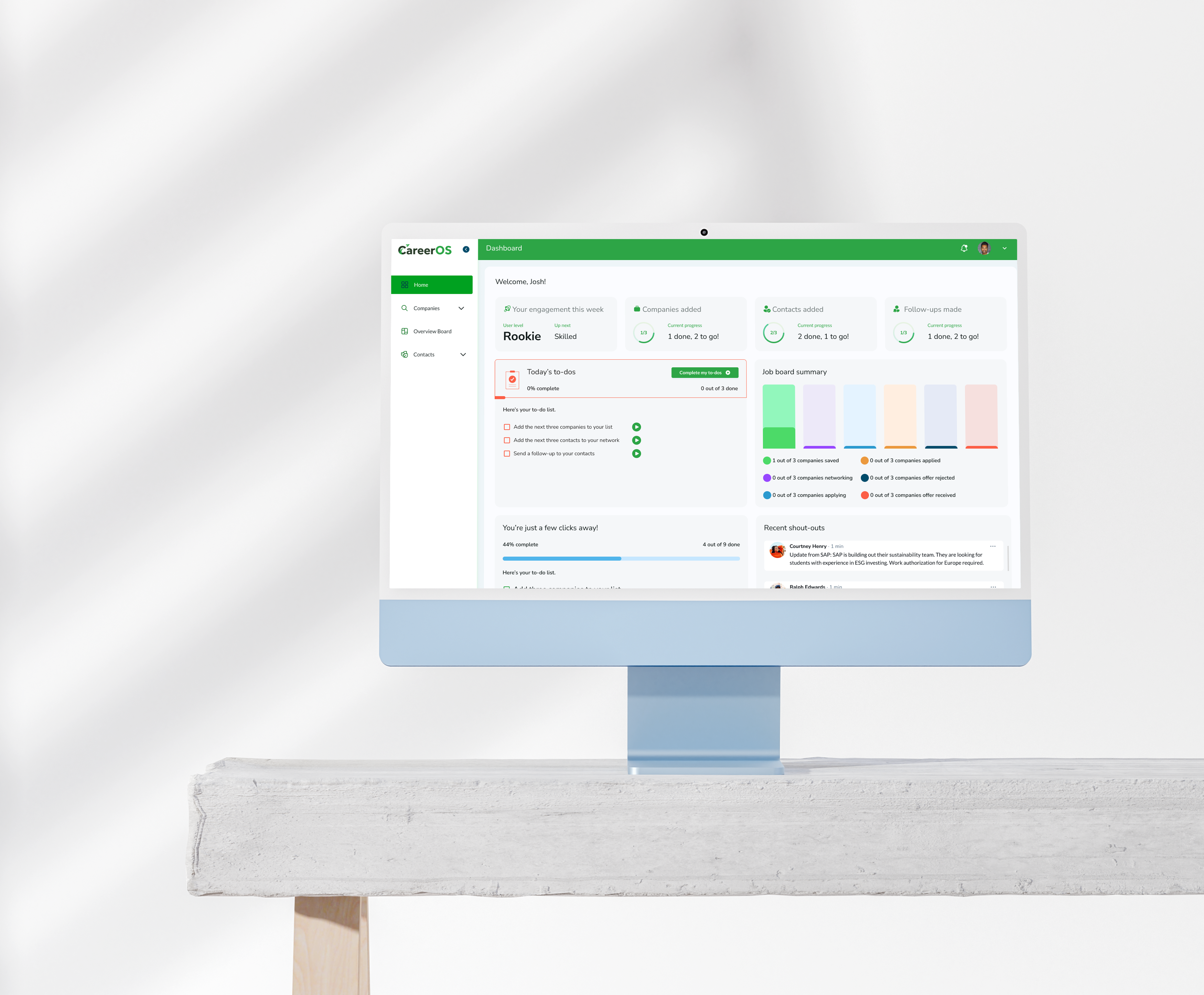
When CareerOS approached Hypnotica, their vision immediately stood out — a platform designed to help students and graduates not just plan their careers, but execute them. The founders’ purpose-driven mindset and empathy for real users resonated deeply with our team.
As part of our ongoing reflections, we like to turn the lens inward and ask ourselves the same questions we often get from clients — about our vision, process, and the meaning behind our design choices. In this self-interview, the Hypnotica team revisits the CareerOS journey: what inspired us, what challenged us, and how this project captures what we call designing futures.
Vision & Challenge
Q: What excited you about CareerOS when you first heard about the project?
What excited us most was the opportunity to solve a real problem for students. The founders had a deeply user-centered approach and a genuine passion for what they were building. That combination of empathy and purpose made it clear that CareerOS wasn’t just another startup — it was a chance to make a meaningful difference.
Q: CareerOS positions itself as a Career Execution Platform. From a design perspective, what does “execution” mean?
For us, “execution” means guiding users through a clear, structured path toward success. It’s about turning something overwhelming — the job search — into a process that feels organized, convenient, and within reach. Every interaction should feel like a step forward, not just another task.
Brand Identity
Q: The airplane logo is symbolic of “taking off.” How did you land on that metaphor, and how did it influence the wider identity system?

The concept came to life after several deep discussions with the founders. Their passion and vision were inspiring, and as soon as we explored the idea of “taking off,” we knew it was the perfect metaphor. It captured everything CareerOS stands for — ambition, progress, and momentum. From there, the entire identity system was built around that feeling of lift-off and forward motion.
UX & Design Process
Q: Students face an overwhelming job hunt — how did you translate that into a UI/UX that feels supportive and step-by-step?
We started by creating structure. The platform is designed to guide students through every stage of their journey — from networking tips and best practices to interview preparation. Beyond content, CareerOS gives users practical tools they can apply daily, helping them track their growth and see their progress directly in the platform.

Q: You had to deliver under tight timelines. What were the trade-offs of skipping wireframes and going straight into UI, and how did you keep quality intact?
Because the product was highly user-focused and data-driven, and brand work was happening in parallel, we made a strategic choice to skip the traditional wireframing phase. Instead, we began with a design system that later evolved into interactive user flows. These were tested early with actual students for feedback. Despite the speed, the quality never dropped — everything was intentional, consistent, and well-structured.
Reflections
Q: Looking back, what does this project say about Hypnotica’s approach to design?
CareerOS is a great reflection of how we work. We listen, adapt, and meet every client where they are. Our process is never about what we like — it’s about what’s right for the product and the users. Every design decision serves a purpose, and that’s what makes the end result feel authentic.
Q: What advice would you give to other startups about the role of design in building trust and usability from day one?
Startups often have limited resources, and design is one of the first areas to be cut. But a consistent, recognizable identity from day one helps you stand out and communicate your value clearly. It builds trust, accelerates growth, and makes everything easier later. Design isn’t a luxury — it’s an investment that pays off.

Q: Finally, in one sentence: what does “designing futures” mean to Hypnotica, and how does CareerOS embody that?
For us, “designing futures” means creating with purpose — solving the right problems in a focused, human-centered way. CareerOS is a perfect embodiment of that mindset: it doesn’t just look good or function well, it truly empowers students to take control of their journey with clarity and confidence.
Conclusion
CareerOS reminded us why we do what we do at Hypnotica — to help ambitious ideas take flight through clarity, empathy, and design that works.
This project captured the essence of designing futures: creating products that don’t just serve users, but guide them toward something greater.
Whether it’s a startup building its first brand or an established platform redefining its experience, our goal remains the same — to design with intention, build with meaning, and turn every spark of potential into something that moves people forward.
_______________________
Additional resources:
- Review the full CareerOS case study here.